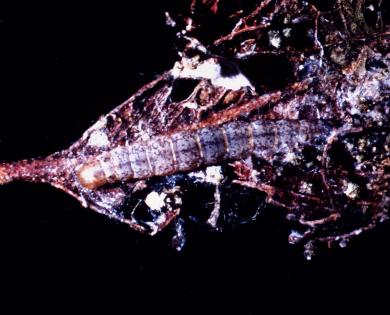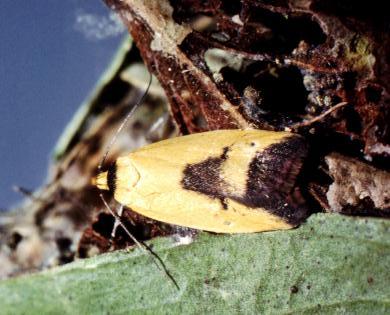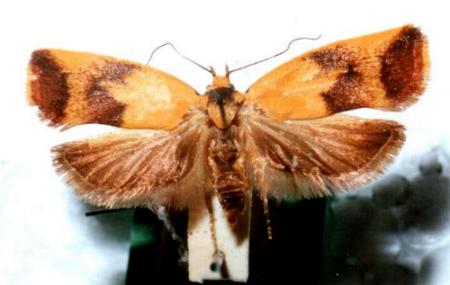
| Webbing Moth (previously known as : Heliocausta hemiteles) WINGIA GROUP, OECOPHORINAE, OECOPHORIDAE, GELECHIOIDEA | (donherbisonevans@yahoo.com) and Stella Crossley & Peter Marriott |

(Photo: courtesy of Merlin Crossley, Melbourne, Victoria)

| Webbing Moth (previously known as : Heliocausta hemiteles) WINGIA GROUP, OECOPHORINAE, OECOPHORIDAE, GELECHIOIDEA | (donherbisonevans@yahoo.com) and Stella Crossley & Peter Marriott |

(Photo: courtesy of Merlin Crossley, Melbourne, Victoria)
These Caterpillars are smooth and pinkish brown, with bands of pale yellow between the segments, and an orange-brown head capsule. The caterpillars feed on various:
They seem to thrive on dead leaves as well as fresh ones. They live communally in shelters of partly eaten and dead leaves joined by silk, and partly covered in frass. The number in one shelter can vary from 2 to 35. The caterpillars grow to a length of about 2 cms.
The Caterpillars pupate in their shelter, and the adults emerge in about two weeks.

The moths have a wingspan of up to 2.5 cm. The wings are yellow with splashes of brown in the terminal area and mid-way along the hind margin. The hindwings are grey-brown.

The species is found in eastern Australia, including:
Further reading :
Ian F.B. Common,
Oecophorine Genera of Australia I:
The Wingia Group (Lepidoptera: Oecophoridae),
Monographs on Australian Lepidoptera Volume 3,
CSIRO Publishing, Melbourne 1994, pp. 34, 75-78.
Pat and Mike Coupar,
Flying Colours,
New South Wales University Press, Sydney 1992, p. 80.
Edward Meyrick,
Descriptions of Australian Micro-Lepidoptera, VIII Oecophoridae,
Proceedings of the Linnean Society of New South Wales,
Volume 7, Part 4 (1883), pp. 475-476.
 caterpillar |  butterflies |  Lepidoptera |  moths |  caterpillar |
(updated 18 February 2009, 31 January 2025)